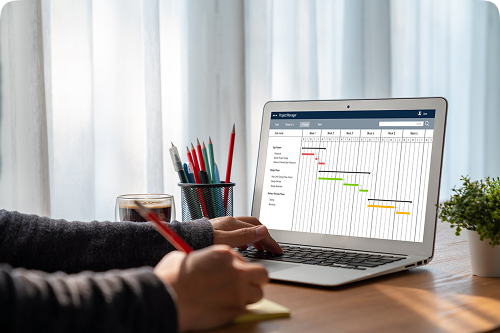Actionable Leave Records to Support Institutional Planning
Introduction
Behind every efficient institution is a well-maintained record system. When it comes to leave tracking, having accessible and meaningful data isn’t just a nice-to-have—it’s essential. Academic calendars, departmental operations, and administrative staffing all hinge on understanding who is available and when. But if leave records are scattered across registers, spreadsheets, or emails, it becomes nearly impossible to make informed decisions.
vmedulife’s Leave Management System is more than just a tool for applying and approving time off—it acts as a comprehensive database that captures detailed records, trends, and insights. These records become crucial for human resource planning, academic scheduling, and organizational decision-making. In this blog, we’ll explore how accurate and accessible leave data can improve institutional outcomes.
1. Centralized Digital Record of Leave Histories
One of the core strengths of the Vmedulife platform is its centralized data handling. Every leave—approved, pending, rejected, or cancelled—is automatically recorded in a digital format. These records include:
Type and duration of leave
Reason stated by the employee
Approving authority and timestamp
Comments or additional documentation
Because everything is stored in one place, there’s no need to reconcile multiple spreadsheets or physical registers. Administrators and HR teams can retrieve employee leave records in seconds.
2. Monthly and Yearly Summaries for Departments
vmedulife automatically generates department-wise leave summaries that include :
Number of leaves taken per employee
Peak leave periods
Unused or carried-forward leave
Frequency of different leave types (casual, medical, earned, etc.)
Such summaries are particularly useful when :
Approving future leave requests
Conducting performance reviews
Planning staff availability during exams, admissions, or audits
It helps teams operate smoothly, even during high-activity months.
3. Spotting Patterns and Predictable Absences
Over time, patterns emerge in leave behavior. vmedulife allows institutions to analyze :
Seasonal trends (e.g., more sick leaves during monsoon)
- Employees who frequently take short or unplanned leaves
Regular absenteeism around festivals or weekends
By identifying these trends, management can take preemptive actions like :
Scheduling temporary support staff
Adjusting workload distribution
Introducing awareness campaigns on responsible leave planning
This data-backed approach makes planning more effective and less reactive.
4. Planning Substitutions and Academic Adjustments
For teaching staff, even a single day of absence can impact classroom continuity. vmedulife’s leave records allow academic coordinators to :
Anticipate upcoming faculty absences
Arrange timely substitutions
Update timetables or lab sessions accordingly
When these actions are informed by leave data, student learning experiences remain uninterrupted and staff collaboration improves.
Conclusion
In a fast-paced educational environment, institutional leaders cannot afford to operate without reliable leave data. It’s not just about tracking who is absent—it’s about knowing how that absence affects operations, students, and staff morale.
vmedulife’s Leave Management System turns raw leave information into valuable insights. From understanding trends and managing workloads to preparing for audits and planning future hires, the module empowers institutions with clear and actionable records.
Instead of being buried under paperwork or delayed by uncertainty, staff and management can rely on accurate, up-to-date leave data to guide their planning—every semester, every year.

